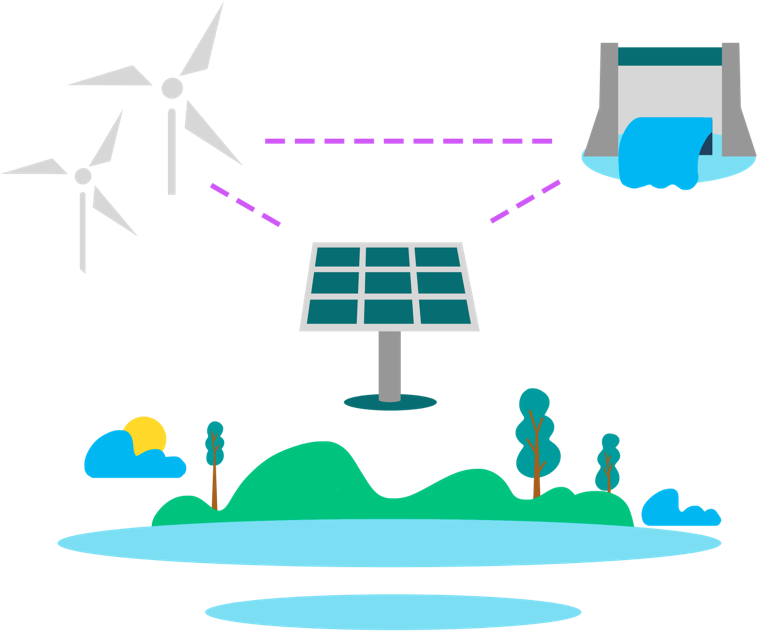Context
Local energy communities (LECs) offer a decentralised and bottom-up approach to producing, managing and using energy
They are set to play a significant role in the energy transition, integrating multiple energy carriers such as electricity, gas, heat, cooling, hydrogen, mobility and water
The Challenge
Society needs energy that is clean, secure and affordable.
While LECs are well placed to deliver on these goals in the longer term, they are inherently complex and require optimised design and operation.
LECs are challenging to optimise as their related stakeholders – developers, asset owners, operators and end users – often have a wide range of action and conflicting objectives within communities. They also need to cater for renewable energy and manage its intermittency. Here are just some of the challenges LECs face today:
– developers may seek the lowest cost possible in a scheme’s setup
– households may prefer a different economic model to the one proposed
– operation and scheduling must take into account the constraints and dynamic interaction between energy carriers

Solution

Using the energy hub concept, eNeuron will develop a set of pioneering tools for the optimal design and operation of multi-carrier energy systems
To achieve this, we will map regulatory and technical bottlenecks with existing LECs before building new use cases and business models for use at different scales. They will draw on the latest software and hardware solutions including a cloud-based management platform to balance supply and demand dynamically from multiple energy carriers.
Once refined, the eNeuron LEC framework will be put to the test at four pilot schemes: a city and its major energy nodes (Bydgoszcz, Poland), a football stadium and its vicinity (Skagerak, Norway), a naval district with its own distribution grid (Lisbon, Portugal), and a university campus across several sites (Ancona, Italy).
The overall purpose is to check the tool’s effectiveness and replicability as a concept and solution for different local contexts.
The local energy networks will be optimised to ensure the high penetration of RES with the associated power electronics, monitoring and control equipment. This will include sectors such as:

- Buildings through improvement of the management of the energy demand, including waste heat recovery and district heating and cooling, the integration for economies of scale, and the diversification of heat and electricity supply from renewables;
- Mobility through the utilisation of electric vehicles;
- ICT through the minimisation of the energy consumption and a smart management of energy flows and technologies.
Objectives

Economic-environmental trade-off to achieve LEC sustainability

Optimised energy flows

Energy security

Contribution to policy and standards

Greater share of renewable energy sources in the power network

Technology readiness levels to rise 6 to 7 and 8
Benefits
- Local prosumers (households, business and industry) stand to benefit from clean and affordable energy from local and renewable sources at lower costs
- Developers and solution providers will find new opportunities for technology within integrated replicable business models
- Distribution system operators (DSOs) will avoid grid congestion and deferring network investments
- Policy makers will benefit from increasingly sustainable and secure energy supply systems
- Rural areas will enjoy economic growth and better access to energy
- The energy trilemma – energy democratisation, security and efficiency – will be better balanced
